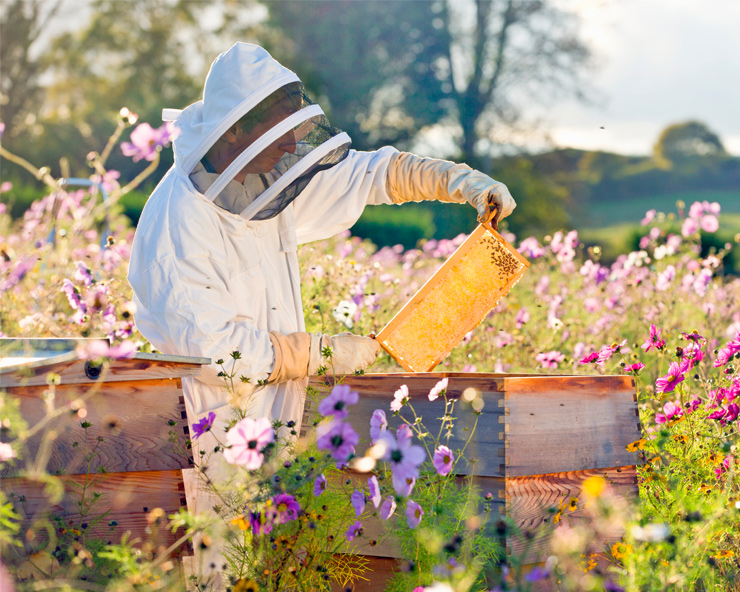While beekeeping is an endeavor that many can take on, but there are many important considerations to protect the bee’s safety and wellbeing. Some obvious reasons to consider beekeeping are fresh honey, beeswax, pollination of gardens and orchards, and a love of bees. Just like the organic production of meat, milk, and eggs, the production of organic honey is also federally regulated. Here are some things to consider if you want to produce honey organically.
Location
One important consideration when keeping bees organically is your hives’ location and surroundings. Hives should be kept away from urban areas, commercial farmlands, or anywhere that pesticides or herbicides may be used. To have certified organic honey, any crops or plants within 1.8 miles of hives must be free of synthetic chemical use. Hives should be in a sunny area but also have a wind barrier. It is also beneficial to face the hive entrance toward the southeast. This is because the sun rises in the east, warming the hive, waking the bees up, and protecting the bees from the northwest wind. Ensure the hives have a water source and plenty of area for nectar and pollen. Hives should be wooden (or another non-synthetic material), located on dry ground, and placed at least 2 feet apart. Winterization of hives is one of the most important husbandry considerations for hives in northern climates.
Pest Management
Mites are one of the biggest threats to honeybees worldwide. One variety, the varroa mite, is especially destructive and can easily spread between hives. These can attack adult bees and developing larvae, eventually feeding on and infecting the entire colony. These mites are also commonly vectors for disease. These infections are known as Parasitic Mite Syndrome and can kill colonies within months of infection. Many infections peak in late summer and fall, so it is important to test your colony. Check out some helpful detection methods from Iowa State University.
If you are dealing with mite problems in your hives, there are various strategies that you can use to prevent and treat mite infestations. Some mechanical ways include screened bottom boards, drone-brood trapping, and inert dusts. Some non-chemical pesticides include Apilife VAR, oxalic acid, and formic acid. Check out the resources at the bottom for more information on how to properly use these products.
There are many benefits of organically producing honey and a large market for the product. Check out the resources below for more tips about beekeeping and organic production.
Resources:
ISU Extension: Managing Varroa Mites in Honey Bee Colonies
Growing Produce: Organic Beekeeping: A Sweet Alternative for Produce Growers
USDA Organic Apiculture Recommendation (2010)
Penn State Extension: An Organic Management System for Honey Bees

